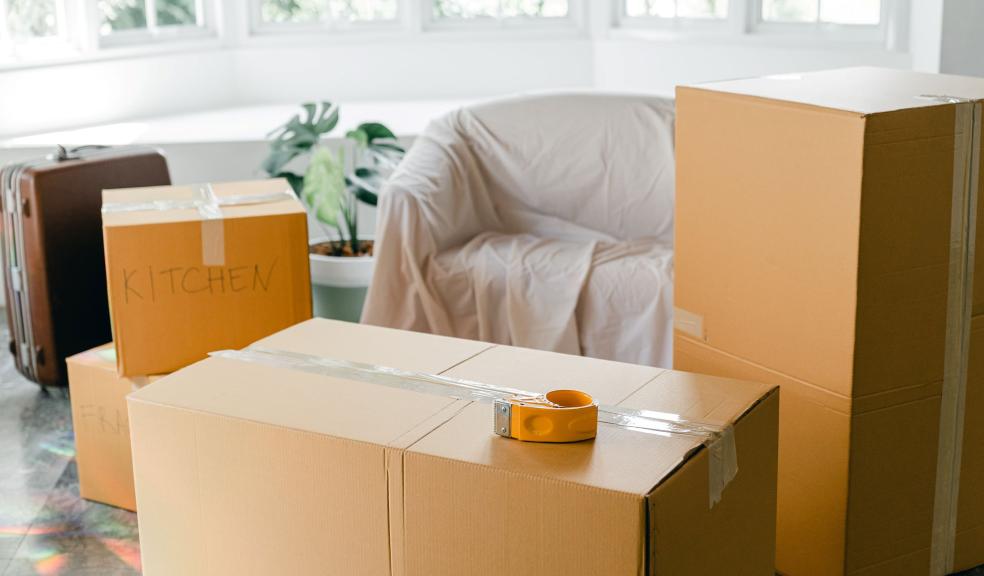
Expert Tips for Moving House with Furry Friends
Before, During and After: Top Tips for Moving Home with your Pet
Moving home can be exciting and daunting all at the same time, not only for you, but for your pets. New environments, scents and routines can leave your pets feeling anxious and overwhelmed, taking the excitement out of your next new adventure. That's why property experts Cala Homes, who sell 3,000 homes a year, teamed up with Emma Hogarth from Let's Talk Behaviour to provide helpful information on what actions to take before, during and after a move to ensure the greatest success.
Before
With the right preparation, you can help ensure your move goes smoothly. Here are some tips on what to do before you move house.
-
Get your pet microchipped or update their information.
-
In the UK alone, there are 2.8 million cats that are not microchipped [3]. Ensure your pet is microchipped and update the microchip information with your new address.
-
You may also want to get them a collar with your updated contact information. With the stress of moving, these details can be easy to forget, but you'll want a way to be reunited with your pet if they were to get lost in their new environment.
-
If your contact details change and you don't update them on the database, you could receive a notice and be liable to pay a £500 fine [2].
-
Get your pets used to new places and routines
-
If you're not moving too far, take your dog for a walk around their new neighbourhood so they can get used to the local areas and become accustomed to the scents.
-
This familiarity can help provide a smooth transition into their new routine.
-
Pet-proofing your new home
-
It is possible that the owners beforehand had a pet, so remove any scent competition by giving the house a deep clean. This can help get your pet accustomed to the new house faster.
-
While you're at it, check the garden for any gaps in fences or other escape routes and make sure to block them. You should also remove any traces of other previous pets, like any toys left behind or obvious toilet activities.
-
There are 89 species of poisonous plants that can be harmful to your pets [4], so you'll also want to look for and remove these around your home to keep your pets safe.
During
Amid the whole moving and unpacking process, it's best to have a list of things to do to get your pet as settled as possible. Here are some tips to incorporate into your moving day.
-
Scent-swapping
-
Bringing in items that smell like home will help your pet settle in. Rub an item that they recently used, such as a soft toy or a blanket, on doorways and furnishings to spread their scent so they can easily recognise it.
-
Once you're done, be sure to unpack all their items and keep them in a safe and secluded room while they get acclimatised to their new environment.
-
Travelling
-
If you know your dog doesn't travel in the car well, why not check with your vet to see if they can provide some anti-nausea medication to prevent any unpleasant surprises on the road?
-
If you're not crate training your dog and they're more comfortable in the back of the car, ensure you put on their car harnesses or buckles to keep them safe while on the move.
-
For long journeys, make sure you take frequent breaks to allow them to burn some energy, have a drink and go to the toilet.
-
Keep your routine
-
Although not always possible, try to keep to your pet's regular routine as much as possible to help them settle in. Feeding and walking routines are easiest to fit into a new schedule, so try your best to stick to them.
-
Cats should be kept indoors on moving day, and kept inside for around three weeks afterwards to get them used to their new space. Ensure you have plenty of litter trays in the room you keep them in.
After
Hopefully, the hard work should be behind you, but there are a few things to keep in mind once everything is unpacked.
-
Give the new owners your details
-
If you're moving to a location near your old home, make sure to give the new owners your contact details so they can get in touch if your pet decides to take itself back home.
-
Establishing a good and happy association with your new home can help your pets transition, so ensure you keep a good routine, give them a few extra treats and spend lots of quality time with them to prevent them from seeking out the old location.
-
Patience is key
-
Let your pets explore at their own pace, and walk around the home with them giving them lots of support and reassurance.
-
This process can take longer for cats, so ensure you have everything they'll need – such as bowls, litter tray and toys – to keep them going until they become accustomed to their new environment.
-
Register with a new vet
-
If you've moved to a completely new area, you'll want to ensure that you register with a new local vet.
-
This is also a good time to update your pet insurance information with your new home details.
Being prepared for a move can help reduce the negative impact it can have on your pets. With helpful tips from Emma Hogarth from Let's Talk Behaviour and maintaining your pet's regular routine, updating important documents and giving them lots of time to adjust can make all the difference to a happy and healthy four-legged friend in your new home.







